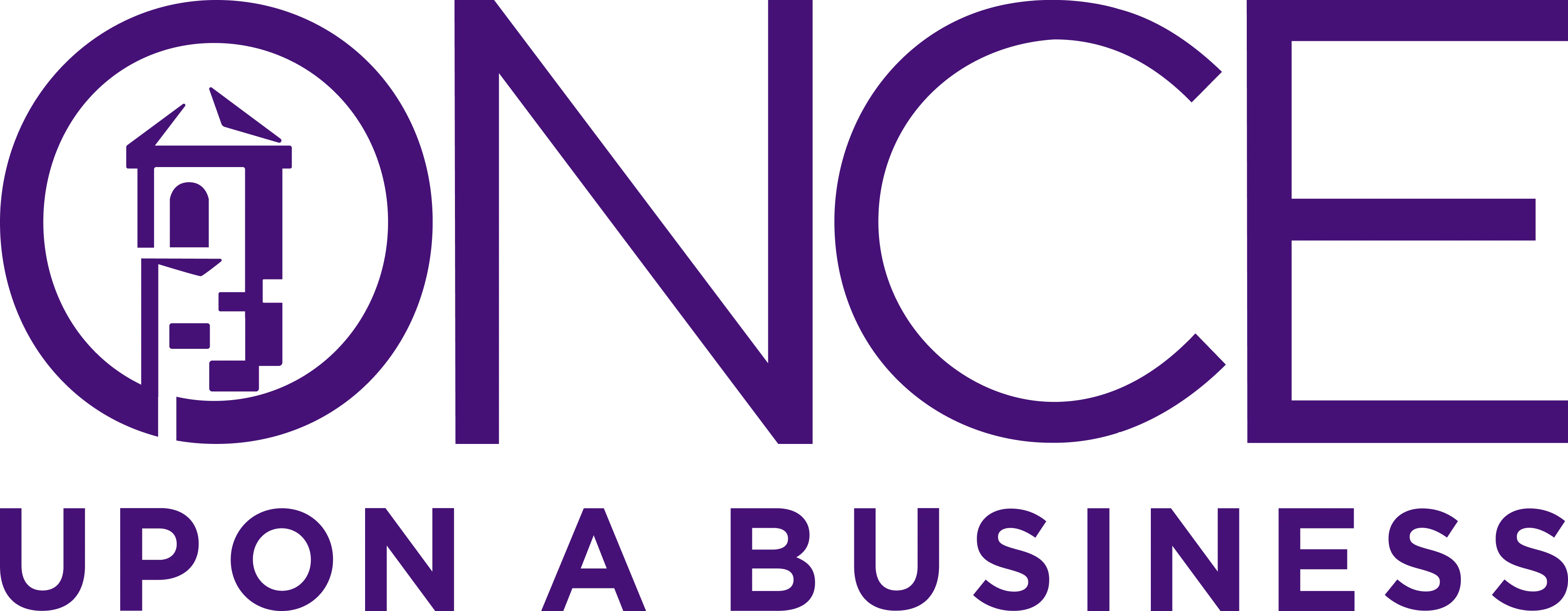
Your partner just closed another deal using "natural sales ability." The prospect was impressed, the conversation flowed, objections melted away. Everyone celebrates the win. Two weeks later, a different rep loses a nearly identical opportunity because they couldn't establish the same presence or authority.
Sound familiar? This is what happens when businesses rely on individual talent instead of systematic excellence. Great salespeople have internalized powerful psychological frameworks, but they can't teach them, can't scale them, and can't guarantee them. The result? Inconsistent performance, unpredictable revenue, and competitive vulnerability.
The solution isn't more sales training or hiring better reps. It's Integrated Persuasion, the systematic embedding of master-level influence frameworks directly into your CRM and automation systems. Instead of hoping your team remembers to use advanced techniques, you engineer them into every prospect interaction.
This approach transforms your businesses positioning permanently. You're no longer delivering basic automation; you're architecting psychological influence systems that make expert-level persuasion automatic. The difference between hoping for great sales performance and engineering it is the difference between depending on talent and dominating through systems.
Why Most Persuasion Training Fails in Practice
Before we integrate persuasion mastery, we need to understand why even the best sales frameworks fail when left to individual execution.
The Consistency Problem
- What it looks like: Sales reps learn powerful techniques in training, apply them sporadically in real situations, and gradually revert to comfortable habits. Even top performers have off days, forget key elements, or skip steps under pressure.
- Why it fails: Human behavior under stress defaults to the simplest response. Complex influence techniques require mental bandwidth that disappears when prospects push back, create objections, or apply pressure. Without systematic reinforcement, even trained behaviors fade.
- The cost: Unpredictable performance across the team, lost deals due to poor execution, and competitive vulnerability when prospects encounter inconsistent experiences.
The Teaching Trap
- What it looks like: Your best rep consistently wins deals using advanced techniques, but struggles to explain exactly what they do. New team members get generic advice like "build rapport" or "overcome objections" instead of specific, actionable frameworks.
- Why it fails: Expert performers operate largely on unconscious competence. They've internalized complex patterns but can't break them down into teachable components. Their success becomes personality-dependent rather than process-dependent.
- The cost: Inability to scale success, heavy dependence on individual talent, and massive vulnerability when top performers leave the company.
The Pressure Breakdown
- What it looks like: Techniques work perfectly in practice scenarios but fall apart when prospects challenge authority, negotiate aggressively, or create time pressure. Reps abandon sophisticated approaches and revert to price-focused selling.
- Why it fails: High-stakes situations trigger fight-or-flight responses that override trained behaviors. Without systematic support, reps default to whatever feels safest in the moment—usually discounting or accommodating rather than holding frame.
- The cost: Lost margins through unnecessary discounting, weakened positioning through accommodating behavior, and missed opportunities due to frame collapse.
The Five Frames of Systematic Influence
To integrate persuasion, we start with the advanced framework developed by Oren Klaff: the systematic use of psychological frames to control the context of every sales interaction. Instead of leaving this to individual memory and skill, we embed each frame directly into our automated systems.
Frame 1: The Intrigue Frame - Systematic Curiosity Generation
The Psychology: The human brain is wired to complete patterns. When you open a story or idea without closure, prospects become psychologically compelled to seek resolution. This creates engagement that transcends logical evaluation.
Email Subject Lines with Built-in Intrigue:
- "The $2M mistake most [Industry] companies make with their CRM..."
- "Why your biggest competitor just fired their sales team..."
- "The counterintuitive reason your best leads aren't converting..."
Nurture Sequence Framework:
Every automated email opens with a pattern interrupt that creates curiosity, provides partial information, then creates necessity for the next touchpoint.
Example Automation:
- Email 1: "I noticed something unusual about companies in [Industry] that consistently outperform their competitors. It has nothing to do with their products, pricing, or people. I'll explain what I discovered tomorrow."
- Email 2: "Yesterday I mentioned the unusual pattern among top-performing [Industry] companies. Here's what I found: they all have one specific system in place that their competitors don't. But here's the strange part—it's not what you think."
CRM Implementation:
- Automated subject line templates with industry-specific intrigue hooks
- Curiosity-based email sequences triggered by behavioral engagement
- Systematic pattern interrupts built into every touchpoint
Frame 2: The Prize Frame - Systematic Qualification Positioning
The Psychology: Humans desire what's difficult to obtain and devalue what's easily available. When you position yourself as the prize to be won rather than the vendor seeking approval, prospect psychology inverts from evaluation to pursuit.
Qualification Triggers:
The CRM automatically creates qualification hurdles at key points in the buyer journey. Prospects must demonstrate fitness before advancing to the next stage.
Example Workflow:
When a lead reaches 50 points (approaching MQL status), they receive:
"Based on your engagement, it looks like you're serious about solving [specific problem]. Before we invest time in a detailed conversation, I need to understand if this is the right fit. Can you confirm: [3 specific qualification criteria]? If so, I can show you exactly how we'd approach your situation."
Boundary Automation:
- Automatic calendar restrictions (only certain time slots available)
- Qualification requirements before meeting booking
- Systematic "disqualification" emails for prospects who don't meet criteria
CRM Implementation:
- Automated qualification sequences at specific lead score thresholds
- Dynamic calendar availability based on prospect qualification status
- Systematic follow-up for unqualified prospects (return to nurture, don't chase)
Frame 3: The Time Frame - Systematic Urgency Creation
The Psychology: Scarcity accelerates decision-making by engaging loss aversion. When prospects believe an opportunity is limited or time-sensitive, they shift from evaluation mode to decision mode.
Natural Scarcity Integration:
Instead of artificial deadlines, the system creates real scarcity based on actual business constraints.
Example Sequences:
- "Our next project opening is [date]. After that, we're not available until [later date]."
- "We only take on 3 new implementations per quarter. We currently have 1 spot remaining."
- "This analysis is only valid for 30 days due to market changes. After that, we'd need to reassess."
Implementation Logic:
The CRM tracks actual capacity and automatically adjusts availability messaging. When project slots fill up, the system updates all prospect communications with genuine scarcity.
CRM Implementation:
- Real-time capacity tracking integrated with prospect communications
- Automatic deadline creation based on project schedules
- Systematic urgency escalation for qualified prospects
Frame 4: The Authority Frame - Systematic Credibility Building
The Psychology: People defer to expertise when they perceive genuine authority. But authority must be demonstrated through specific proof, not generic claims. Systematic credibility building creates unshakeable positioning before sales conversations begin.
Evidence-Based Sequences:
Every touchpoint delivers specific proof of expertise rather than general claims.
Authority Automation Framework:
- Diagnostic Authority: "Our analysis of 200+ [industry] companies revealed that 73% are losing revenue due to [specific problem]. Here's the diagnostic we use to identify this issue..."
- Predictive Authority: "Based on the patterns we've identified, companies with your profile typically see [specific outcome] within [timeframe]. Here's why..."
- Prescriptive Authority: "For businesses in your situation, there are exactly three approaches that work. Most choose option 1, which creates [problem]. We recommend option 3 for [specific reasons]..."
Content Delivery System:
The CRM automatically delivers case studies, white papers, and diagnostic tools based on prospect behavior and industry.
CRM Implementation:
- Industry-specific authority content triggered by demographic data
- Behavioral content delivery based on engagement patterns
- Systematic expertise demonstration through automated insights
Frame 5: The Moral Frame - Systematic Ethical Urgency
The Psychology: The moral frame is the most powerful because it transcends logical and emotional objections. When prospects believe that action is not just beneficial but ethically necessary, resistance collapses and urgency intensifies.
Moral Imperative Integration:
The system identifies and amplifies the ethical dimensions of business problems, creating moral urgency around solutions.
Example Frameworks:
- Employee Moral Frame: "Your sales team is working 60-hour weeks because your CRM system forces manual work. They deserve better tools."
- Customer Moral Frame: "Your customers are receiving delayed responses because of system limitations. They're paying for service they're not getting."
- Growth Moral Frame: "Your business has the potential to serve 3x more clients, but operational constraints are limiting your impact. People who need your help aren't getting it."
Systematic Implementation:
During discovery calls, reps identify moral dimensions and the CRM automatically delivers supporting content that reinforces ethical urgency.
CRM Implementation:
- Moral dimension identification during qualification
- Ethical urgency content triggered by specific business problems
- Systematic reinforcement of moral imperatives throughout nurture sequences
The Master Integration: Building Psychological Workflows
The true power comes not from individual frames but from systematic integration where multiple psychological elements work together seamlessly.
The Master Sequence Architecture
Phase 1: Intrigue + Authority (Weeks 1-2)
Prospects enter with curiosity-driven emails that simultaneously demonstrate expertise:
"I noticed something counterintuitive about businesses like yours. The ones that scale fastest actually spend LESS on marketing than their competitors. Here's the diagnostic framework we use to identify why..."
Phase 2: Prize + Time (Weeks 3-4)
As engagement increases, qualification and scarcity elements activate:
"Based on your engagement with our diagnostic content, it looks like you're serious about systematic growth. We're currently evaluating 3 companies for our Q4 implementation slots. If you're interested in being considered, here's what we need to know..."
Phase 3: Moral + Authority (Weeks 5-6)
Final conversion leverages ethical urgency supported by credible evidence:
"Your analysis shows you're leaving $180K on the table annually due to operational inefficiencies. Your team is working overtime to compensate for system limitations. Here's exactly how we'd solve this and why waiting costs more than acting..."
Advanced Automation Rules
Frame Maintenance Protocols:
- If prospects attempt to negotiate price: Automatic "authority reinforcement" sequence activates
- If prospects request multiple meetings: "Prize frame reinforcement" triggers calendar restrictions
- If prospects delay decisions: "Time + moral frame" urgency sequences begin
- If prospects compare to competitors: "Authority differentiation" content delivers
Beta Trap Countering:
The system identifies and automatically counters low-status prospect behaviors:
The "Shop Around" Beta Trap:
Auto-response: "I understand you're evaluating multiple options. Before you invest time in comparisons, let me ask: are you looking for the lowest price or the most effective solution? Because if it's price, we're probably not the right fit."
The "Think It Over" Beta Trap:
Auto-response: "I'm surprised to hear that. Based on our diagnostic, this problem is costing you $[amount] monthly. What additional information would help you feel confident about solving it?"
The "Multiple Decision Makers" Beta Trap:
Auto-response: "Who else needs to be involved in this decision? I'd rather have everyone in the same conversation than play telephone through multiple meetings. Can we schedule a single meeting with all decision makers?"
The Systematic Narrative
Throughout the entire automated journey, prospects experience a consistent, high-status narrative:
- You have a problem (supported by diagnostic authority)
- This problem is costing you (moral urgency + specific evidence)
- We have the solution (systematic proof + case studies)
- You must act now (genuine scarcity + time pressure)
- We choose our partners carefully (prize positioning + qualification)
This narrative is reinforced through every email, every piece of content, and every system interaction, ensuring that by the time prospects speak to a sales rep, the psychological foundation for closing is already established.
FAQ: Advanced Persuasion Questions for Business Owners
1. "This seems manipulative. How do I present this to clients without seeming unethical?"
Frame it correctly: "We're not manipulating prospects; we're systematically communicating value and ensuring qualified opportunities receive appropriate attention. Every element reflects genuine business constraints and real expertise."
The techniques work precisely because they align with human psychology and authentic business practices. Manipulation would be creating false scarcity or claiming non-existent expertise.
2. "What if prospects see through the techniques or call them out?"
When implemented correctly, these frames feel natural because they reflect genuine business realities. If prospects "call out" qualification requirements or capacity constraints, you simply confirm: "That's correct. We work with serious prospects who meet specific criteria because it ensures better results for everyone."
The frame is maintained through confidence in your standards, not through deception.
3. "How do I train my team to support these automated systems without sounding scripted?"
The automation handles the psychological architecture, but reps need to understand the framework to maintain it in live conversations. Train them on the underlying principles, not just the scripts.
For example: "When prospects ask for discounts, they're testing your prize frame. Your job is to reinforce value and boundaries, not negotiate price. The system has already established why we're worth the investment—your role is to confirm it."
4. "What happens if prospects opt out of the automated sequences?"
Someone who opts out of value-driven education probably wasn't a qualified prospect anyway. The system saves you time by identifying unengaged leads early rather than wasting sales effort on them.
However, ensure your content provides genuine value. If opt-out rates are high, the issue isn't the psychological framework—it's content quality or targeting.
5. "How do I measure the effectiveness of these psychological elements?"
Track behavioral changes, not just conversion metrics:
- Are prospects scheduling meetings faster?
- Are they asking fewer price-related questions?
- Are they bringing decision makers to calls without being asked?
- Are objection rates declining?
These indicate that the psychological foundation is working before prospects reach the sales team.
From Hoping to Engineering
Here's what most businesses miss about persuasion: Psychology isn't a sales technique. It's a systems design principle.
Traditional sales approaches treat persuasion as something that happens during conversations. But human psychology is influenced by every interaction, every piece of content, and every system touchpoint long before prospects speak to a salesperson.
The Master Level recognizes that systematic influence begins the moment someone enters your funnel and continues through every automated interaction. By the time prospects reach your sales team, their psychological framework is already established.
When your systems integrated high-status persuasion, several things happen:
- Performance becomes predictable instead of personality-dependent. Every prospect experiences the same psychological journey regardless of which rep they encounter.
- Objections decrease dramatically because frames are pre-established. Prospects arrive at sales conversations already positioned to see you as the expert authority.
- Margins increase because price becomes secondary. When authority and prize frames are properly established, prospects focus on outcomes rather than costs.
- Scaling becomes systematic rather than dependent on hiring superstars. The system creates high-performance results regardless of individual talent level.
- This isn't just better sales automation. It's the difference between hoping for psychological influence and systematically engineering it.
- Strategy without systems is a fairy tale. But systems that integrate master-level persuasion? That's how businesses create unfair advantages that competitors can't copy or match.
Your Strategic Mastery: The Complete Revenue Flywheel
You now possess the complete Fairy Tale Revenue Flywheel, a systematic approach to transforming marketing leads into committed clients through psychological precision:
- The Diagnosis: You identify exactly why prospects' current systems fail and quantify the cost of inaction.
- The Blueprint: You architect customer-centric pipelines that build trust systematically rather than hoping for connection.
- The Engine: You score and nurture prospects automatically, ensuring sales attention only goes to genuinely qualified opportunities.
- The Proposal Document: You prescribe solutions confidently rather than competing on price through desperate proposals.
- The Integrated Persuasion: You operationalize advanced persuasion frameworks so every prospect experiences expert-level influence automatically.
This complete system transforms your businesses positioning permanently. You're no longer the vendor hoping to win business; you're the strategic architect of systematic revenue generation.
Your clients don't need another sales team. They need a systematic approach to psychological influence that works whether anyone is paying attention or not. The Fairy Tale Revenue Flywheel is that system, and you're the only one who can implement it properly.
Stop hoping your clients' sales will improve. Start engineering their psychological advantage with systematic precision.

Discover Your Happily Ever After
Subscribe to get weekly updates on how you can start handling departmental plot holes in your story!






